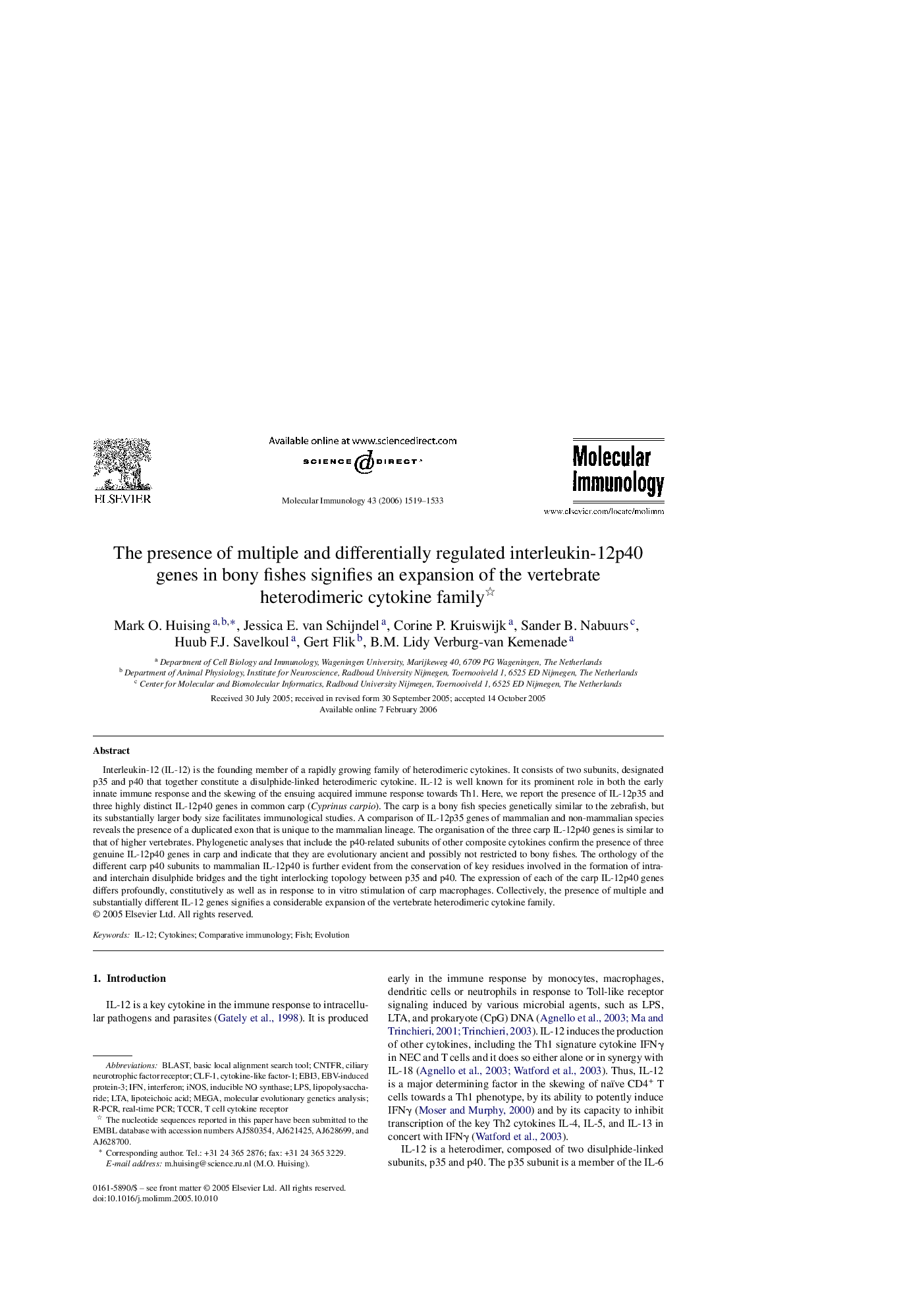| Article ID | Journal | Published Year | Pages | File Type |
|---|---|---|---|---|
| 2832896 | Molecular Immunology | 2006 | 15 Pages |
Interleukin-12 (IL-12) is the founding member of a rapidly growing family of heterodimeric cytokines. It consists of two subunits, designated p35 and p40 that together constitute a disulphide-linked heterodimeric cytokine. IL-12 is well known for its prominent role in both the early innate immune response and the skewing of the ensuing acquired immune response towards Th1. Here, we report the presence of IL-12p35 and three highly distinct IL-12p40 genes in common carp (Cyprinus carpio). The carp is a bony fish species genetically similar to the zebrafish, but its substantially larger body size facilitates immunological studies. A comparison of IL-12p35 genes of mammalian and non-mammalian species reveals the presence of a duplicated exon that is unique to the mammalian lineage. The organisation of the three carp IL-12p40 genes is similar to that of higher vertebrates. Phylogenetic analyses that include the p40-related subunits of other composite cytokines confirm the presence of three genuine IL-12p40 genes in carp and indicate that they are evolutionary ancient and possibly not restricted to bony fishes. The orthology of the different carp p40 subunits to mammalian IL-12p40 is further evident from the conservation of key residues involved in the formation of intra- and interchain disulphide bridges and the tight interlocking topology between p35 and p40. The expression of each of the carp IL-12p40 genes differs profoundly, constitutively as well as in response to in vitro stimulation of carp macrophages. Collectively, the presence of multiple and substantially different IL-12 genes signifies a considerable expansion of the vertebrate heterodimeric cytokine family.
